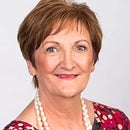How we help
Leading the global effort to eliminate cervical cancer
Cervical cancer rates have plummeted in Australia since screening began in 1991. And now, through a renewed screening program, rates are set to fall even further. Thanks to the support of people like you, Cancer Council’s research and advocacy has helped set the scene for Australia to eliminate cervical cancer as a public health issue.
Each year cervical cancer causes more than 300,000 deaths worldwide, making it the fourth-highest cause of cancer mortality in women. But it needn’t be this way. Unlike any other cancer, almost all cervical cancer cases are caused by a virus (human papillomavirus or HPV) and early warning signs of cancer can be detected through screening.
LAUNCHING AUSTRALIA’S FIRST NATIONAL CERVICAL SCREENING PROGRAM
While the Pap test has been used for decades to help doctors detect early signs of cervical cancer, it wasn’t until 1986 that the World Health Organisation published guidelines for its use in population screening. The Australian Government was quick to set up an expert committee on cervical screening, inviting Cancer Council to participate, and in 1991 a national program was introduced.
Over the next 15 years, Cancer Council worked with successive governments on multiple aspects of the Pap test program, including communications, registries, GP support and setting up programs for priority populations.
The results were astounding, with cervical cancer rates in Australia halving, and incidence and mortality from the disease dropping to world-record lows. Although there were disparities, due to poorer screening access for disadvantaged groups such as Aboriginal and Torres Strait Islander women, the program was praised as one of Australia’s most successful public health initiatives.
HPV IMMUNISATION: A WORLD FIRST
In the mid-2000s, there was another advance in the cervical cancer research world: a vaccine was on the horizon, and once again Cancer Council was leading the research and advocacy for change.
Even before the WHO cervical screening guidelines were published in 1986, Scottish-Australian immunologist Ian Frazer and collaborator Jian Zhou were researching a vaccine for HPV. Painstaking research, supported by multiple funders including Cancer Council, began to pay off in the late 1990s when trials showed the vaccine provided immunity from four HPV strains, responsible for 70% of cervical cancers.
By the mid-2000s – Professor Frazer was by now also the vice-president of Cancer Council Australia – the evidence was strong enough for the vaccine to be added to Australia’s national immunisation program. In 2006, the first HPV vaccine was approved for use.
Immunity against HPV could mean immunity against cervical cancer - but screening was still important as the vaccine only covered some strains of HPV and some people might still have been exposed to the virus. A population of vaccinated girls and women were now eligible to screen for a disease they might be immunised against – an exciting world first.
The following year, the Australian Government asked Cancer Council to organise a summit to discuss the future of cervical cancer screening in the era of HPV immunisation. It was agreed that the vaccine had the potential to make a good program even better, but for governments, overhauling a national public health program can be costly – even if it might change the world.
Cancer Council’s expertise in research and advocacy to drive change again came to the fore.
RENEWING THE PROGRAM: A LANDMARK JOINT ACHIEVEMENT
Research led by Professor Karen Canfell, Director of the Cancer Research Division, Cancer Council NSW, showed screening using molecular testing for HPV would be more effective than the Pap test. By screening for HPV infection rather than cell abnormalities, the test would also catch the problem earlier – meaning testing could be conducted every five years after your first HPV test, instead of every two.
However, such a major change would be disruptive and there were also unfounded concerns that longer screening intervals or a new test could cost lives.
To find a way forward, the Government asked Professor Canfell’s team to analyse the evidence, which was done with an innovative modelling tool, developed by Cancer Council.
In a landmark analysis, the research showed a shift to five-yearly HPV testing for women aged 25 to 74 could reduce cervical cancer mortality by at least 20 per cent, as well as reduce costs. At the same time, first results from Australia’s largest clinical trial, Compass, showed for the first time internationally that HPV screening was superior to Pap smear screening, even in a population like Australia’s which had been heavily vaccinated.
A next generation of HPV vaccine was then introduced into the national immunisation program in 2016, after further Cancer Council research supported its cost-effectiveness. This next generation vaccine protects against strains of HPV that cause up to 90% of cervical cancers.
THE AUSTRALIAN SUCCESS STORY
In December 2017, a renewed national cervical screening program was introduced, making a good public health program even better. Moreover, immunisation and HPV testing have the potential to deliver the most needed improvement of all – reducing the difference in cervical cancer outcomes between non-Indigenous and Aboriginal and Torres Strait Islander women.
The superior effectiveness of the HPV screening test would benefit under-screened groups because even one-off, self-collected samples had the potential to save lives, leading to fairer access for women who are disadvantaged by location, cultural barriers and poverty.

Professor Sanchia ArandaCancer Council has been there for every step in a 30-year journey from the establishment to the renewal of cervical screening in Australia. And we need to be there to bring this home, especially if we are to address inequities between population groups."
Chair, City Cancer Challenge
Cancer Council research shows the renewed screening program could by 2022 take cervical cancer rates below six per 100,000 Australians - the threshold for defining a rare cancer. If we can get this number below four per 100,000 by 2035, cervical cancer will have been eliminated as a public health issue.
The world has taken notice of our Australian success story, with more than 100 countries following our lead and committing to cervical cancer elimination plans. In 2019, Cancer Council’s research team published the first global estimates of the impact of scaled-up HPV vaccination and HPV screening, and are now supporting WHO in strategic planning for elimination of cervical cancer.

Professor Karen CanfellOur Cancer Council team is one of a small number of experienced groups working actively with the World Health Organisation to support global efforts to eliminate cervical cancer."
Chair, Cancer Screening and Immunisation Committee, Cancer Council Australia
Government leadership, informed and driven by Cancer Council research and advocacy, has put Australia at the forefront of a milestone event in public health. Through the generosity of supporters like you we can continue to lead critical cancer issues through our expertise in research, prevention, support and advocacy.
Our prevention stories
Learn more about how we are helping to stop cancer before it starts
